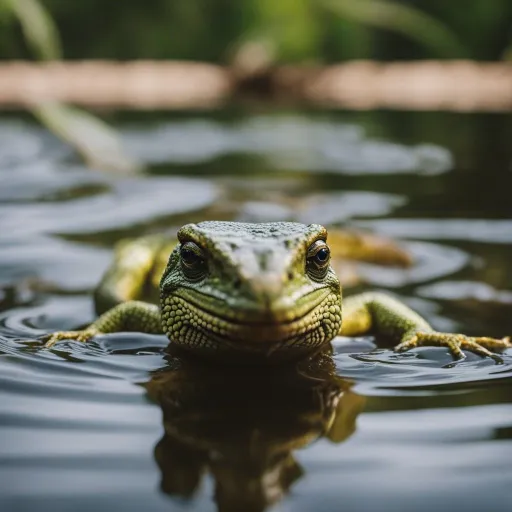
So you’re curious about what whiptail lizards feast on, huh? Well, these fascinating creatures have quite the interesting diet!
Whiptail lizards have a diverse diet that includes various prey items such as insects, arthropods, small vertebrates, and even plants. Their diet can vary depending on the species and their respective habitats.
In this article, we’ll explore the diverse culinary world of whiptail lizards, giving you a glimpse into their dietary habits and how they manage to sustain themselves in their natural habitats.
Get ready to learn about the surprising dining preferences of these agile and voracious lizards!
Overview
Whiptail lizards, also known as whiptails, are a fascinating group of reptiles with unique characteristics and dietary preferences.
In this article, we will explore the diet of whiptail lizards, exploring their feeding habits, hunting strategies, and the factors that influence their diet.
Understanding what these lizards eat is crucial for their health and survival, as well as for gaining insights into their role in the ecosystem.
Introduction
Whiptail lizards belong to the family Teiidae and are distributed across the Americas. They are known for their sleek bodies, long tails, and agile movements. Whiptails are diurnal creatures, meaning they are active during the day. Their diet consists of a variety of prey items, ranging from insects and arthropods to small vertebrates and even plants. Let’s delve deeper into the physical characteristics of whiptail lizards and how these relate to their feeding habits.

Physical Characteristics
Whiptail lizards possess a slender body shape and long, tapering tails. This unique physique allows them to swiftly maneuver through their environment while hunting for prey. They have sharp claws that aid in capturing and holding onto their quarry. Furthermore, their jaws are well-adapted for capturing and consuming different types of food. This combination of physical traits gives them an advantage in pursuing a diverse range of prey.
Diet of Whiptail Lizards
General Feeding Habits
Whiptail lizards are predominantly carnivorous, meaning they primarily feed on animal matter. However, some species demonstrate omnivorous tendencies and incorporate plant material into their diet as well. Their feeding habits vary depending on the species and their respective habitats. Let’s examine the various food sources these lizards target.
Insects
The majority of whiptail lizards rely heavily on insects as the main component of their diet. They have a particular fondness for beetles, ants, termites, grasshoppers, and crickets. These agile hunters use their exceptional speed and agility to capture swift-moving insects. Whiptails can be seen darting across the ground, swiftly overtaking their prey before seizing it with their sharp jaws.
Arthropods
In addition to insects, whiptail lizards also consume a fair amount of arthropods. These include spiders, scorpions, and centipedes. While arthropods may not be the primary portion of their diet, they offer a nutritional boost and contribute to the overall diversity of the whiptail lizard’s food sources.
Small Vertebrates
Certain species of whiptail lizards possess more specialized jaws that enable them to feed on small vertebrates. These may include lizards and small snakes, as well as the occasional small mammal or bird. Although less common in their diet, small vertebrates provide a valuable source of protein for these predators.
Plants
Unlike most reptiles, some whiptail lizards have broadened their diet to include plant material. They consume a variety of plant matter, such as leaves, flowers, fruits, and seeds. This ability to utilize vegetation allows them to occupy diverse habitats and adapt to different environmental conditions. The consumption of plant material also contributes to the nutritional requirements of whiptail lizards, providing them with additional vitamins and minerals.

Feeding Behavior
Hunting Strategies
Whiptail lizards employ various hunting strategies depending on the type of prey they are targeting. When pursuing insects and arthropods, they utilize their remarkable speed and agility to chase down their quarry. With lightning-fast movements, they seize their prey and dispatch it swiftly. For small vertebrates, they rely on ambush tactics, patiently waiting for an opportunity to strike. This varied hunting behavior allows whiptail lizards to adapt to different prey types and increase their chances of securing a meal.
Foraging Techniques
In addition to active hunting, whiptail lizards also engage in foraging behavior. They use their keen sense of smell and visual acuity to locate plant matter. When foraging, they may browse through vegetation, carefully selecting leaves or fruits that provide the necessary nutrients. This foraging strategy is particularly evident in omnivorous whiptail species that heavily rely on plant material as part of their diet. By combining active hunting with selective foraging, whiptail lizards maximize their chances of obtaining a well-rounded diet.
Unique Adaptations for Feeding
Jaw Structure
One of the key adaptations of whiptail lizards is their jaw structure. Their jaws are highly mobile and possess sharp teeth well-suited for seizing and tearing apart their prey. This versatile jaw structure enables them to capture and consume a wide range of food items, from small insects to small vertebrates. The ability to accommodate a varied menu enhances their survival prospects, especially in environments where prey availability may fluctuate.
Flexible Diet
Another unique adaptation of whiptail lizards is their flexible diet. While some species specialize in certain types of prey, others display a broader dietary range. This flexibility allows these lizards to adjust their feeding behavior based on the availability of prey in their specific habitat. By having a broad diet, whiptail lizards can survive in varying environments, ensuring their long-term success.
Factors Influencing Diet
Habitat
The habitat in which whiptail lizards reside significantly influences their diet. Different whiptail species occupy various ecosystems, ranging from arid deserts to tropical forests. The available prey within these habitats determines the food sources accessible to these lizards. Therefore, the habitat plays a crucial role in shaping the dietary preferences of whiptail lizards.
Availability of Prey
The availability of prey is a key factor influencing the diet of whiptail lizards. Fluctuations in prey populations, such as seasonal variations or alterations in habitat conditions, can have a significant impact on the feeding choices of these lizards. They must adapt to the changing availability of prey or switch to alternative food sources to ensure their survival.
Seasonal Variations
Seasonal variations also affect the diet of whiptail lizards. During colder months or periods of decreased prey activity, whiptails may alter their feeding behavior. This could involve shifting to more abundant food sources or conserving energy by reducing their overall activity level. By being adaptable to seasonal changes, whiptail lizards can maintain a consistent food supply and increase their chances of survival.
Importance of Diet
Nutritional Requirements
Understanding the diet of whiptail lizards is crucial for assessing their nutritional requirements. Like all living organisms, they need a balanced diet to thrive and reproduce successfully. A varied diet ensures that whiptails receive the necessary proteins, vitamins, and minerals to maintain optimal health. Knowledge of their dietary preferences allows conservationists to develop appropriate management strategies to protect these remarkable reptiles.
Impact on Health and Survival
The diet of whiptail lizards directly impacts their overall health and survival. Inadequate nutrition can lead to reduced reproductive success, weakened immune systems, and an increased risk of predation. By ensuring access to suitable prey items, we can support the well-being and survival of these fascinating creatures in their natural habitats.
Prey Preference
Prey Size
Whiptail lizards display a range of preferences when it comes to prey size. Smaller species tend to focus on insects and arthropods that are proportionate to their own body size. As the size of the lizards increases, they are capable of tackling larger prey. Larger species may include small vertebrates as part of their diet. The ability to consume prey of varying sizes allows these lizards to exploit different niches within their ecosystem.
Prey Movement
Another prey preference among whiptail lizards relates to the movement of their potential targets. Fast-moving prey, such as insects and agile arthropods, attract the attention of whiptail lizards due to their natural instinct to pursue moving objects. The swift movements of their prey trigger their hunting instincts, leading to an increased likelihood of a successful capture. This preference for prey movement influences the hunting strategies employed by whiptail lizards.
Diet Variations among Whiptail Lizard Species
Carnivorous Species
While most whiptail lizards are predominantly carnivorous, some species are entirely dedicated to an animal-based diet. These carnivorous whiptails primarily prey on insects, arthropods, and small vertebrates. Their specialized jaw structure and hunting behavior allow them to excel in capturing and consuming animal matter effectively. By having a carnivorous diet, these species have adapted to exploit the abundance of prey in their respective environments.
Omnivorous Species
In contrast to the carnivorous whiptails, certain species of whiptail lizards display omnivorous tendencies. These lizards have evolved to incorporate plant matter into their diet, supplementing their nutritional needs. They may feed on a variety of plant material, including leaves, flowers, fruits, and seeds. The inclusion of plant material in their diet allows these omnivorous species to occupy diverse habitats and successfully thrive in different ecological settings.
Interaction with Other Species
Predators
Whiptail lizards face predation from a variety of predators in their natural habitats. These can include birds of prey, snakes, larger mammals, and other reptiles. Awareness of their predators significantly impacts their feeding behavior and overall survival. To avoid becoming prey, whiptail lizards may alter their prey preference, foraging techniques, and hunting strategies, ultimately influencing their diet.
Competition for Food
Competition for food can also influence the diet of whiptail lizards. In habitats with limited resources, whiptails may have to compete with other species for similar prey items. This competition influences the selection of prey and may lead to variations in their diet among different populations. Understanding these competitive interactions is crucial for managing and conserving whiptail lizard populations, ensuring their continued presence in their ecosystems.
Final Thoughts
In conclusion, whiptail lizards have a diverse diet that includes various prey items such as insects, arthropods, small vertebrates, and even plants.
Their hunting strategies, jaw structure, and flexibility in food choices allow them to adapt to different habitats and thrive in a range of ecological settings.
Understanding their diet is crucial for ensuring their nutritional needs are met, maximizing their health and survival.
By comprehending the dietary preferences of whiptail lizards, we can also gain insights into their role in their respective ecosystems.
These remarkable reptiles contribute to the balance of nature and warrant our attention and protection.



